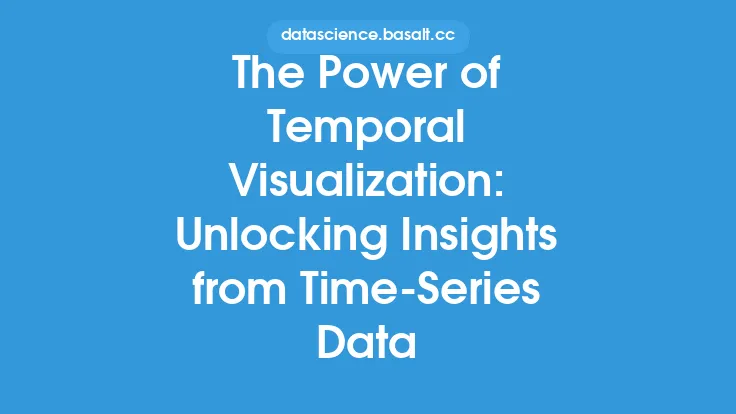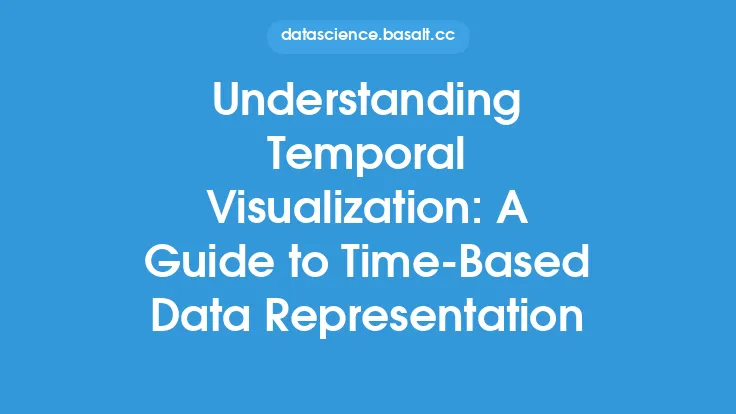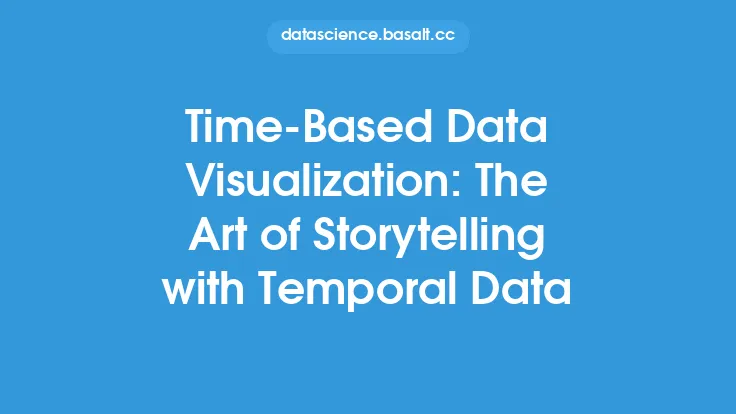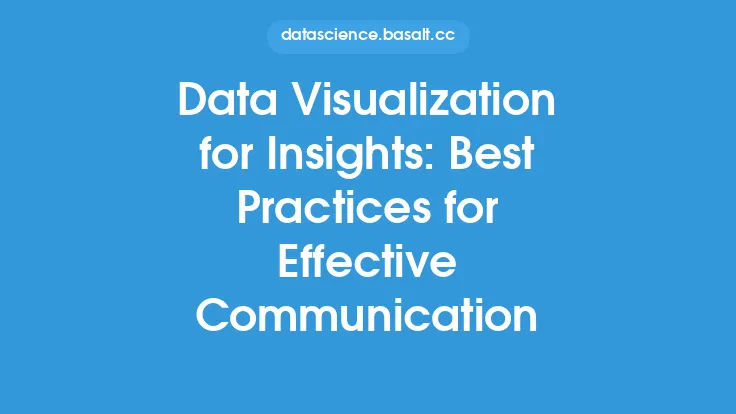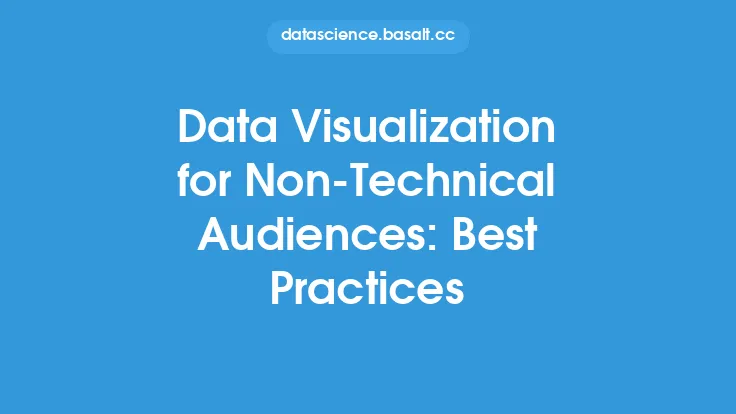When it comes to communicating time-based insights, effective visualization is crucial for conveying complex information in a clear and concise manner. Temporal data visualization is a specialized field that deals with the representation of time-series data, which can be challenging due to the inherent complexity of time-based relationships. In this article, we will delve into the best practices for creating informative and engaging temporal data visualizations, exploring the key principles, techniques, and tools that can help you unlock the full potential of your time-based data.
Introduction to Temporal Data Visualization
Temporal data visualization is a subset of data visualization that focuses specifically on the representation of time-series data. This type of data is characterized by a series of measurements or observations taken at regular intervals over time, which can be used to track trends, patterns, and relationships. Effective temporal data visualization requires a deep understanding of the underlying data, as well as the ability to communicate complex time-based insights in a clear and concise manner. By applying best practices and techniques, you can create visualizations that reveal hidden patterns, trends, and correlations, and provide valuable insights for decision-making.
Key Principles of Temporal Data Visualization
There are several key principles that underlie effective temporal data visualization. These include:
- Time awareness: The ability to understand and represent the passage of time in a clear and intuitive manner.
- Data density: The ability to effectively represent large amounts of data in a compact and readable format.
- Visual hierarchy: The use of visual elements such as color, size, and position to create a clear hierarchy of information.
- Interactivity: The ability to engage with the visualization and explore the data in more detail.
By applying these principles, you can create temporal data visualizations that are informative, engaging, and easy to understand.
Techniques for Temporal Data Visualization
There are several techniques that can be used to create effective temporal data visualizations. These include:
- Line charts: A simple and effective way to represent time-series data, line charts can be used to show trends and patterns over time.
- Area charts: Similar to line charts, area charts can be used to represent cumulative totals or running averages over time.
- Bar charts: Bar charts can be used to represent categorical data over time, such as the number of sales or website visits by month.
- Scatter plots: Scatter plots can be used to represent the relationship between two variables over time, such as the relationship between temperature and humidity.
- Heatmaps: Heatmaps can be used to represent large amounts of data in a compact and readable format, such as the number of website visits by hour of day and day of week.
By selecting the right technique for your data, you can create visualizations that effectively communicate time-based insights and reveal hidden patterns and trends.
Tools for Temporal Data Visualization
There are several tools that can be used to create temporal data visualizations, ranging from simple spreadsheet software to specialized data visualization platforms. Some popular tools include:
- Tableau: A powerful data visualization platform that offers a range of tools and features for creating interactive and dynamic visualizations.
- Power BI: A business analytics service that offers a range of tools and features for creating interactive and dynamic visualizations.
- D3.js: A JavaScript library for producing dynamic, interactive data visualizations in web browsers.
- Matplotlib: A Python plotting library that offers a range of tools and features for creating static and interactive visualizations.
- Seaborn: A Python data visualization library that offers a range of tools and features for creating informative and attractive statistical graphics.
By selecting the right tool for your needs, you can create temporal data visualizations that are informative, engaging, and easy to understand.
Best Practices for Temporal Data Visualization
There are several best practices that can be applied to create effective temporal data visualizations. These include:
- Keep it simple: Avoid clutter and complexity by using simple and intuitive visualizations.
- Use color effectively: Use color to draw attention to important trends and patterns, and to create a clear visual hierarchy.
- Label axes clearly: Label axes clearly and consistently to avoid confusion and ensure that the visualization is easy to understand.
- Provide context: Provide context for the visualization, such as the time period or geographic location, to help viewers understand the data.
- Make it interactive: Make the visualization interactive by adding features such as hover text, zooming, and filtering.
By applying these best practices, you can create temporal data visualizations that are informative, engaging, and easy to understand.
Common Challenges in Temporal Data Visualization
There are several common challenges that can arise when creating temporal data visualizations. These include:
- Dealing with missing data: Missing data can be a challenge in temporal data visualization, as it can create gaps or inconsistencies in the visualization.
- Handling large datasets: Large datasets can be challenging to visualize, as they can be difficult to render and interact with.
- Representing uncertainty: Representing uncertainty or error in temporal data visualization can be challenging, as it requires effective communication of complex statistical concepts.
- Creating interactive visualizations: Creating interactive visualizations can be challenging, as it requires a range of technical skills and expertise.
By being aware of these challenges and applying best practices and techniques, you can create effective temporal data visualizations that communicate time-based insights in a clear and concise manner.
Conclusion
Temporal data visualization is a powerful tool for communicating time-based insights and revealing hidden patterns and trends. By applying key principles, techniques, and best practices, you can create informative and engaging visualizations that provide valuable insights for decision-making. Whether you are working with simple spreadsheet software or specialized data visualization platforms, there are a range of tools and techniques available to help you unlock the full potential of your time-based data. By staying focused on the key principles and best practices outlined in this article, you can create temporal data visualizations that are effective, informative, and easy to understand.
